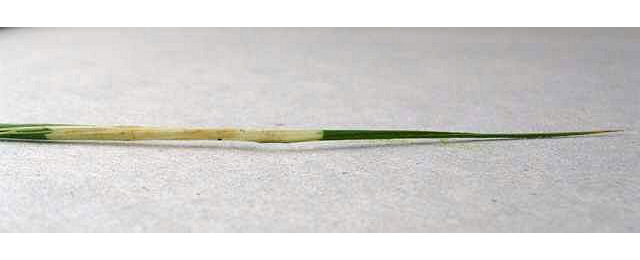|
||||||
|
Helcystogramma
rufescens (Zeller, 1877) Orange Crest Recurvaria rufescens
Zeller,
1877 |
|||||||||||||||||||||||||||||||||||||||||||||||||||||||
Grass-spinner: The larva spins grass blades and feeds inside the spiral spinning, causing whitening of the grass blade tip. It changes leaves several times in the course of its development (British leafminers).
Larva: The larvae of moths have a head capsule and chewing mouthparts with opposable mandibles (see video of a gracillarid larva feeding), six thoracic legs and abdominal legs (see examples). The striking black and white striped larva is described and illustrated in British leafminers and UKMoths. Pupa: The pupae of moths have visible head appendages, wings and legs which lie in sheaths (see examples). Adult: The adult is illustrated in UKMoths and the Encyclopedia of Life. The species is included in mothdissection.co.uk. Hosts in Great Britain and Ireland:
Hosts elsewhere:
Time of year - larvae: April-July (British leafminers). Time of year - adults: The nocturnal adults fly between June and August (UKMoths). Distribution in Great Britain and Ireland: Occurring in England and Wales (UKMoths), including Anglesey, Bedfordshire, Berkshire, Buckinghamshire, Caernarvonshire, Cambridgeshire, Denbighshire, Derbyshire, Dorset, Durham, East Cornwall, East Kent, East Norfolk, East Suffolk, Flintshire, Glamorgan, Herefordshire, Hertfordshire, Huntingdonshire, Isle of Wight, Kirkudbrightshire, Leicestershire, Merionethshire, Middlesex, North Essex, North Hampshire, North Lincolnshire, North Somerset, Nottinghamshire, Shropshire, South Devon, South Essex, South Hampshire, South Lancashire, South Somerset, South Wiltshire, South-east Yorkshire, South-west Yorkshire, Stafford, South Northumberland, Surrey, Warwickshire, West Cornwall, West Gloucestershire, West Kent, West Norfolk, West Suffolk, West Sussex, Westmorland and Worcestershire (NBN Atlas) and the Channel Is. (Fauna Europaea). Also recorded in Republic of Ireland (UKMoths; Fauna Europaea and NBDC interactive map. Distribution elsewhere: Widespread in continental Europe including Austria, Belarus, Belgium, Czech Republic, Danish mainland, Estonia, Finland, French mainland, Germany, Greek mainland, Hungary, Italian mainland, Latvia, Liechtenstein, Lithuania, Luxembourg, Norwegian mainland, Poland, Romania, Russia - Central, East and North, Slovakia, Spanish mainland, Sweden, Switzerland, The Netherlands and Ukraine (Fauna Europaea). NBN Atlas links to known host species:
British and Irish Parasitoids in Britain and elsewhere: Currently unknown. |
|||||||||||||||||||||||||||||||||||||||||||||||||||||||
|
|
|
| External links: | Search the internet: |
Belgian Lepidoptera |
Find
using Google Find using Google Scholar Find images using Google |
| Last updated 27-Jun-2019 Brian Pitkin | ||

